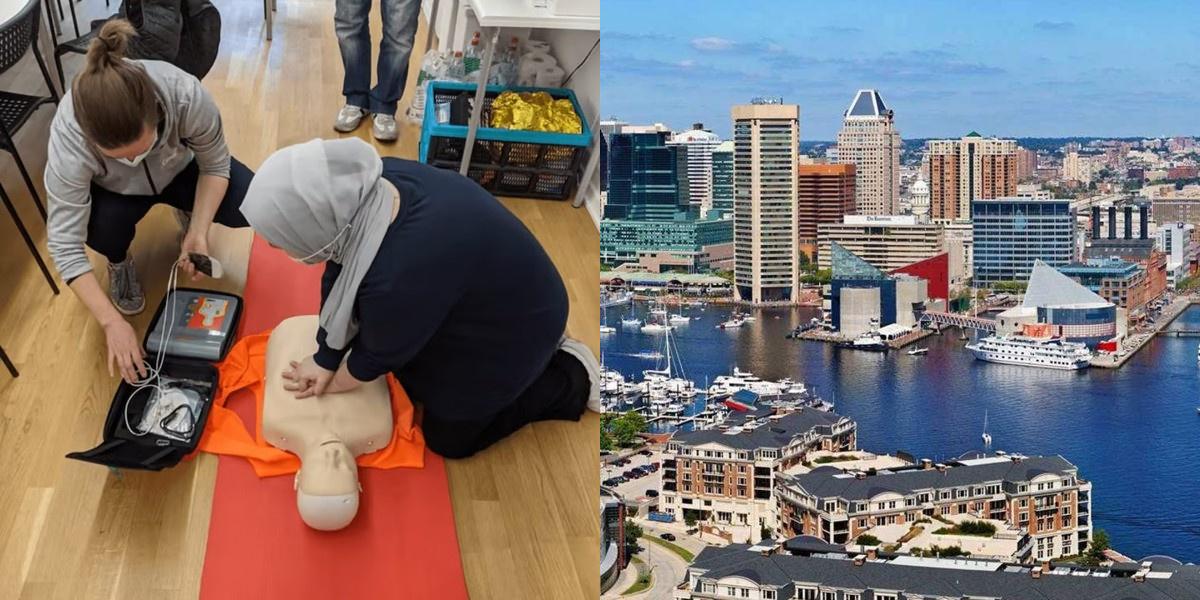What is a Paramedic?
A paramedic is a highly trained medical professional who provides emergency medical care to patients in critical situations. They are often the first responders in medical emergencies and are responsible for assessing the patient's condition, providing necessary medical interventions, and transporting the patient to a healthcare facility.
The responsibilities of a paramedic include:
- Administering medications and treatments
- Performing advanced medical procedures, such as intubation and defibrillation
- Monitoring vital signs and interpreting medical data
- Assisting with childbirth and providing emergency obstetric care
- Collaborating with other healthcare professionals to provide seamless patient care
Where does a Paramedic work?
Paramedics can work in various settings, including:
- Ambulance Services: Paramedics are commonly employed by ambulance services and respond to emergency calls.
- Hospitals: Some paramedics work in hospital emergency rooms or critical care units to provide advanced medical care.
- Fire Departments: Many fire departments have paramedics as part of their emergency response teams.
- Helicopter and Air Abulance Services: Paramedics may be employed by air medical services to provide emergency care during air transport.
- Event Medical Services: Paramedics are often present at sporting events, concerts, and other large gatherings to provide medical assistance.
How to Become a Paramedic in Maryland?
To become a Paramedic in Maryland, one must first complete an accredited Paramedic training program, which typically takes 1-2 years to finish. After graduating, individuals must pass the National Registry of Emergency Medical Technicians (NREMT) exam to obtain their Paramedic certification. With this certification, they can then search for Paramedic job opportunities in Maryland and start earning a competitive salary.
What are the requirements to become a Paramedic in Maryland?
To become a paramedic in Maryland, you must fulfill certain education and legal requirements. These include:
- Education:
- Legal Requirements:
-
Must be at least 18 years old
-
Possess a valid driver's license
-
Obtain certification in Basic Life Support (BLS) for Healthcare Providers
-
Pass the National Registry of Emergency Medical Technicians (NREMT) paramedic exam
It is important to note that specific requirements may vary depending on the county or organization you wish to work for. It is advisable to check with the relevant authorities to ensure you meet all the necessary criteria.
Exploring a Career in Paramedic Outside Maryland
If you're dreaming of being a Paramedic but find yourself in a different state, fear not — your dreams are still achievable. You might find your path to becoming a Paramedic in locations such as Arkansas, Massachusetts, Nebraska, Oregon, or West Virginia. And if these don't match your current location, Dreambound simplifies the journey by helping you easily search and compare CPR-BLS classes using just your zip code. With commitment and the right resources like Dreambound, entering healthcare is possible from anywhere.
How do I get my Paramedic certification?
If you have a passion for helping others and a strong desire to work in the medical field, becoming a paramedic might be the right career path for you. Paramedics are highly trained professionals who provide emergency medical care to those in need. They are often the first on the scene of an accident or medical emergency and play a crucial role in saving lives.
To become a certified paramedic, you must complete a rigorous training program and pass a certification exam. Here are the steps you need to take to get your paramedic certification:
1. Obtain a high school diploma or GED: Before you can pursue a career as a paramedic, you must have a high school diploma or GED. If you haven't already completed your high school education, you will need to do so before moving on to the next steps.
2. Complete a paramedic training program: The next step is to enroll in a paramedic training program. These programs are typically offered by community colleges, technical schools, and universities. The length of the program can vary, but most paramedic training programs take about 1-2 years to complete.
During the program, you will learn about anatomy, physiology, pharmacology, and other medical subjects. You will also receive hands-on training in emergency medical procedures, such as CPR, intubation, and administering medications. Additionally, you will complete clinical rotations in hospitals and ambulance services to gain practical experience.
3. Pass the National Registry of Emergency Medical Technicians (NREMT) exam: After completing your paramedic training program, you will need to pass the NREMT exam to become certified. The NREMT exam consists of both a written test and a practical skills test.
The written test covers topics such as patient assessment, airway management, trauma care, and medical emergencies. The practical skills test assesses your ability to perform various emergency medical procedures, such as taking a patient's vital signs, immobilizing a fractured bone, and administering medications.
4. Obtain state certification: In addition to passing the NREMT exam, you will also need to obtain state certification to work as a paramedic. The requirements for state certification can vary, so it's important to check with your state's EMS office or licensing board for specific details.
In some states, you may need to complete additional training or meet specific requirements to obtain state certification. This may include completing a certain number of clinical hours, passing a background check, or providing proof of immunizations.
5. Maintain certification through continuing education: Once you have obtained your paramedic certification, you will need to maintain it through continuing education. Paramedics are required to complete a certain number of continuing education hours every two years to stay up to date with the latest medical advancements and best practices.
Continuing education can include attending conferences, workshops, and seminars, as well as completing online courses and participating in hands-on training sessions. It's important to stay informed and continually improve your skills as a paramedic.
How do I get a job as a Paramedic?
After obtaining your paramedic certification, the next step is to find a job as a paramedic. Here are some steps you can take to increase your chances of landing a job in this field:
1. Gain experience as an EMT: Before becoming a paramedic, many individuals start their careers as Emergency Medical Technicians (EMTs). Working as an EMT can provide valuable experience and help you build a strong foundation in emergency medical care.
Consider working as an EMT for a few years before pursuing a paramedic position. This will give you hands-on experience and help you become more comfortable in high-pressure situations.
2. Network with professionals in the field: Networking is an important part of any job search, and it's no different for paramedics. Attend local EMS conferences, join professional organizations, and participate in online forums to connect with other paramedics and professionals in the field.
Building relationships with others in the industry can lead to job opportunities and valuable recommendations. Keep in touch with your instructors, classmates, and colleagues from your paramedic training program, as they may be able to help you find job openings or provide references.
3. Tailor your resume and cover letter: When applying for paramedic positions, it's important to tailor your resume and cover letter to highlight your relevant skills and experience. Include any certifications, training, and experience you have in emergency medical care.
Emphasize your ability to remain calm in high-pressure situations, your strong communication skills, and your ability to work as part of a team. Highlight any experience you have working in diverse communities or with special populations, as this can be an asset in the field of paramedicine.
4. Prepare for job interviews: Before attending a job interview, it's important to prepare by researching the organization and familiarizing yourself with common interview questions. Practice your responses to these questions and come prepared with examples of situations where you have demonstrated your skills and abilities as a paramedic.
During the interview, be professional, confident, and enthusiastic. Demonstrate your passion for helping others and your commitment to providing high-quality emergency medical care.
5. Consider additional certifications or specializations: While not always required, obtaining additional certifications or specializations can make you a more competitive candidate in the job market. Consider pursuing certifications such as Advanced Cardiac Life Support (ACLS), Pediatric Advanced Life Support (PALS), or Prehospital Trauma Life Support (PHTLS).
Specializing in a specific area of paramedicine, such as flight paramedicine or tactical paramedicine, can also open up additional job opportunities. Research the requirements and opportunities for specialization in your area.
Career Paths and Opportunities after Becoming a Paramedic
Once you have become a certified paramedic, there are several career paths and opportunities you can explore. Here are a few options to consider:
Ambulance Service: One of the most common career paths for paramedics is to work for an ambulance service. Ambulance services provide emergency medical care and transportation to those in need. As a paramedic, you will respond to 911 calls, assess patients' conditions, provide necessary medical interventions, and transport patients to the appropriate medical facility.
Working for an ambulance service can be fast-paced and challenging, but it is also incredibly rewarding. You will have the opportunity to make a direct impact on people's lives and help those in need during emergency situations.
Hospital Emergency Department: Another career path for paramedics is to work in a hospital emergency department. In this setting, paramedics provide emergency medical care to patients who arrive at the hospital by ambulance or on their own. They work alongside doctors, nurses, and other healthcare professionals to stabilize patients, administer medications, and assist with procedures.
Working in a hospital emergency department can provide a different set of challenges and opportunities compared to working in an ambulance service. You will have access to more resources and equipment, and you may have the opportunity to work with patients who require more advanced care.
Flight Paramedic: Flight paramedics are paramedics who provide emergency medical care to patients who are being transported by helicopter or airplane. They work in collaboration with pilots and other crew members to ensure the safe transport of critically ill or injured patients.
Becoming a flight paramedic typically requires additional training and certifications, as well as experience working as a paramedic in a high-volume EMS system. Flight paramedics may work for hospitals, air medical transport companies, or government agencies.
Teaching or Training Future Paramedics: If you have a passion for teaching and helping others, you may consider a career in paramedic education. Many paramedics go on to become instructors or trainers in paramedic training programs. They teach future paramedics the skills and knowledge they need to provide high-quality emergency medical care.
Teaching in a paramedic training program can be a rewarding way to give back to the profession and help shape the future of emergency medical services. It allows you to share your knowledge and experience with others and help them develop the skills they need to succeed as paramedics.
Advanced Degrees or Certifications: Some paramedics choose to pursue advanced degrees or certifications to further their careers. This can include obtaining a Bachelor's or Master's degree in a related field, such as emergency medicine or healthcare administration. Advanced degrees can open up opportunities for leadership positions or roles in research and academia.
Additionally, paramedics can pursue certifications in specialized areas of paramedicine, such as critical care paramedicine or community paramedicine. These certifications demonstrate a higher level of expertise and can lead to specialized job opportunities.






